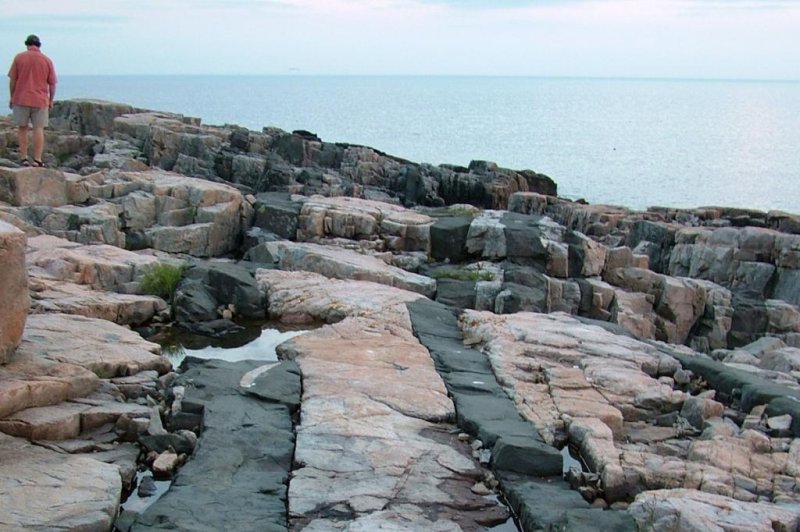Large igneous provinces are massive accumulations of igneous rocks that form when large amounts of magma rise through Earth's crust toward the surface. New research suggests their formation can trigger the release of large amounts of greenhouse gas. Photo by NPS
Dec. 5 (UPI) -- Some 55 million years ago, Earth experienced 100,000 years of extremely high temperatures, a period of global warming known as the Paleocene-Eocene Thermal Maximum.
To better understand the geological origins of this warming period, scientists designed models to simulate the greenhouse gas emissions produced by Large igneous provinces, or LIPs.
Large igneous provinces are massive accumulations of igneous rocks that form when large amounts of magma rise through Earth's crust toward the surface.
The formation of the North Atlantic Igneous Province, one of Earth's largest LIPs, occurred around the same time as PETM.
"Past studies had suggested that the NAIP could have released a large amount of greenhouse gases, but no one had been able to work out if they were released quickly enough to cause the PETM," Stephen Jones, senior lecturer in Earth systems at the University of Birmingham in Britain, told UPI.
For the new study, scientists calculated a variety of greenhouse gas fluxes linked with the formation of NAIP.
"The breakthrough came when we developed a new way of dating how fast the LIP magma was created deep within the Earth," Jones said.
The new model showed that as the magma rose relatively rapidly through the crust, the molten rock cooked organic material near Earth's surface, producing large amounts of methane and carbon dioxide that escaped to the atmosphere.
The study, published Thursday in the journal Nature Communications, is the first to calculate the speed at which LIP formation triggers greenhouse gas emissions.
"This is important because the difference between our calculated magma-driven gas release and records of changing greenhouse gas concentrations across the PETM will tell us about feedbacks that either release more greenhouse gases and make warming worse, positive feedbacks, or act to remove greenhouse gases and reduce warming, negative feedbacks," Jones said. "The size of these additional feedbacks in response to rapid warming is a key question for our understanding of past and future climate change."
Unlike modern climate change, which is playing out on relatively short time scales, the PETM saw temperatures rise 5 degrees Celsius over several thousand years. But the ancient warming period precipitated by the formation of NAIP can help modern scientists more accurately model, predict and contextualize the warming happening today.
"By understanding how much carbon dioxide was released during the PETM, we can start to understand how quickly and how it was removed from the Earth's atmosphere," Jones said. "This new understanding will also help us think about the final fate of the carbon dioxide that we are releasing now."
In future studies, Jones and his colleagues hope to study connections between the formation of other LIPs and mass extinctions, global climate shifts and large changes in ocean chemistry.















